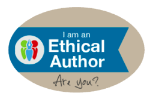






.jpg)

What is Symbolism? Well, actually it’s a device authors often use in fictional writing. It is where something tangible, such as an object, animal, or person, is used to represent a specific idea or entity. It’s also a way of spicing up your text in order to engage your readers. By defining what symbolism is, and understanding when you should use it, you will come to learn how it can make a huge difference to your writing.
The question though is, how do we define symbolism? Now I am sure you are already familiar with some of the literal devices that help narratives stand out – such as… the metaphor or the paradox, for example; after all, they are tools we were taught in school or university. Well, symbolism is no different as it is a literal device that helps readers identify with the text; regardless of whether it’s in a poem, novel, or short story. If you read a story with recurring motifs, then it’s probably symbolism at work. If so, we suggest you try re-
The next question is, why do we use symbolism? The main reason writers choose to use symbolism as a key device in their storytelling is to add depth to their work. If you aren’t directly telling the reader what you really mean but can somehow point to it, then your story grows. It can show stronger characters, and it helps capture your audience's imagination. By showing readers what you mean through the text; their narrative becomes more sophisticated. But if you tell something exactly how it is, then the whole thing can become boring and pretty obvious.
So, what are the most well-
Let’s start. First, there’s the Conventional Symbol: This is the best-
Next comes the Accidental Symbol: Now, this is the opposite of a conventional symbol, in that it is based on personal experience, but again there is no firm relationship between the symbol, and what it symbolises. If someone has a bad experience in a specific place then they subconsciously learn to connect that place with negative emotions. The same if you eat something horrible, you will usually associate that with the type of food, or a restaurant. However, in contrast to the conventional, the accidental symbol cannot be shared by anyone else. It is for this reason that accidental symbols are rarely used in myths, fairy tales, or works of art, nor are they written in symbolic language as they are not easy to convey. That is unless the writer adds a lengthy comment to each symbol they use.
Finally, we have the Universal Symbol: Here there is an intrinsic relationship between the symbol and what it represents. It is most likely what your teacher was talking about when he/she was close to reading your essay. Universal symbols are understood across time and culture; mainly because they link the external world to the internal, sensory one. Emotions and sensory experiences endure, meaning stories heavy in universal symbolism also endure. Fire is symbolic of power and energy; a flock of blackbirds are symbolic of darkness and impending doom.
The question now is how should you use symbolism in your writing. Well, symbolism can be very effective when showing not telling. It can make your story much more interesting to read, and therefore, more popular. Let’s look at how you can use symbolism throughout your narrative.
Let’s start with that good ole’ familiar one -
What about adding imagery into the context: If we look at 1984, we can understand when Orwell refers to the government as ‘Big Brother.’ The image he has created helps him get the symbol right in our, the reader’s minds and as such, we visualise the oppression that ‘Big Brother’ can or cannot present to us.
Look at the darker meaning of a symbol: Using symbols for dark purposes is not necessarily usual but could also be a risk worth taking. For example in the Harry Potter saga, we see Voldemort used as a negative character, being the symbol of power-
What about connecting themes and characters: It is easy for Symbols to be used to connect various themes throughout the text. For example, through the symbol of language, money and materialism are strongly connected in the story of The Great Gatsby. The wording used displays and builds in our minds an image that shows the power of finance.
And to finalise: What you need to do is think about all those symbols that surround us. We all know that a cross usually represents either a church or death. And, in some cases, a different type of cross might also represent… say a hospital. A red heart tends to mean love, but then so do red roses. Whilst red can also symbolise blood. And, the Madonna with child gives us the notion of motherhood. Or that woman who dresses and sings!
Using symbols in your text is a great way to help your readers visualise the story better. It can also be a tool for explaining more complicated or complex processes within the story. Plus, using symbolism adds to the emotion of the text, often keeping readers in your fictional world.
Of course, you can use your own symbols to portray ideas or entities within your text. But, if you’re not completely aware of how to use symbolism in your stories, you can always check out the free essay samples at https://gradesfixer.com/free-
Looking at the essay samples on this site will help you familiarise yourself with other people’s work. It will also help you understand how to use symbolism in your own work. And don’t forget, reading as much as you can is a must if you want to be a good solid writer.
Copyright © 2022 AB Business Group. All rights reserved.